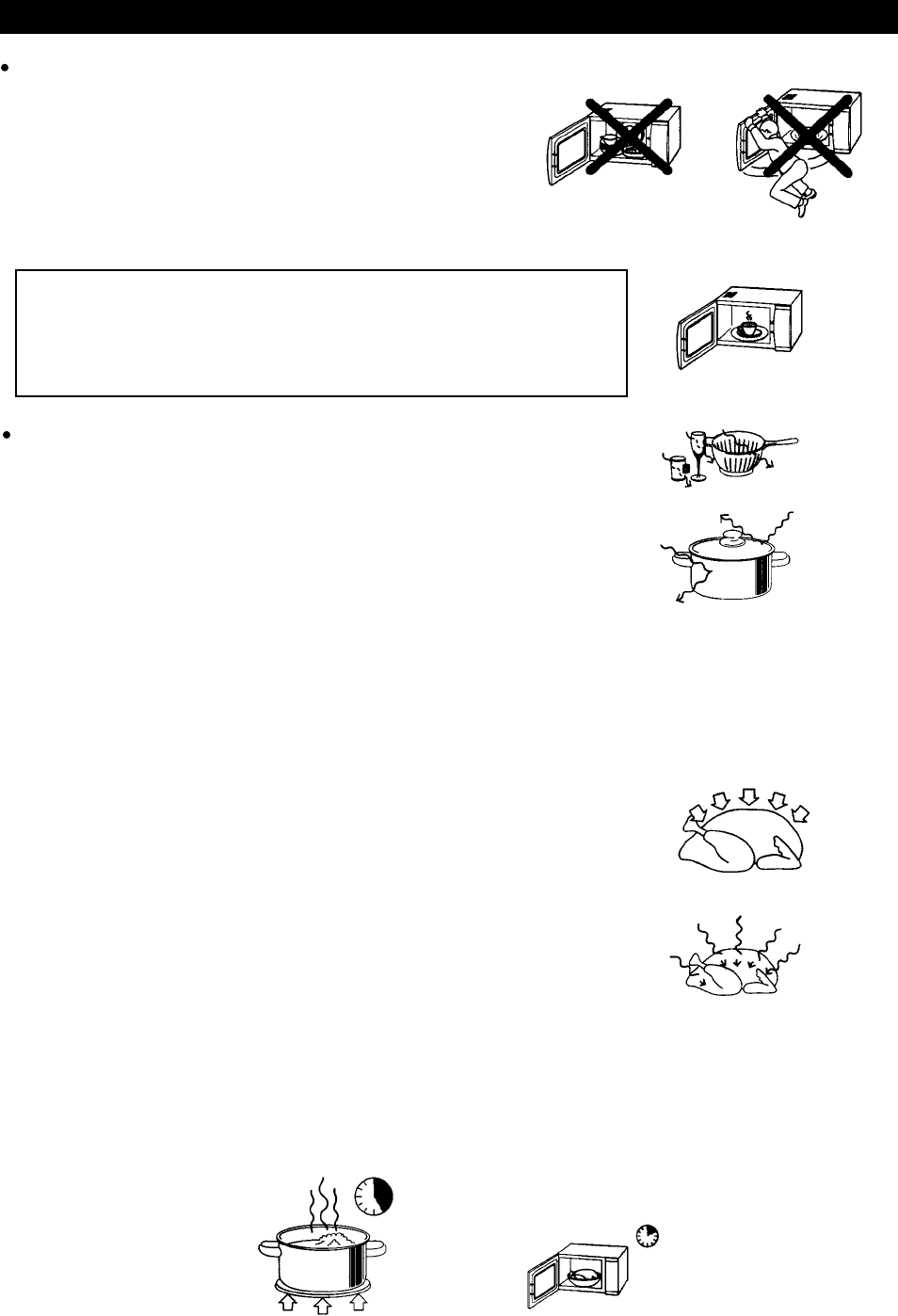
USE OF THE MICROWAVE
- Do not use the oven cavity for storage purposes.
- Do not leave paper, cooking utensils or food in the cavity
when not in use.
- Make sure that children do not swing on the door when it is open.
The oven should not be operated empty when using microwaves.
Operation in this manner is likely to damage the appliance.
If you want to practice programming, put a glass of water inside the
oven, to absorb the microwaves.
WHAT ARE MICROWAVES?
Microwaves are like TV waves or light waves.
You cannot see them, but you can see their effect.
Just as ordinary daylight passes through glass, plastic or air, microwaves
pass through materials like paper, glass, porcelain, plastic and air. These
materials do not contain water or metal and will consequently not be
heated up by the microwaves. Microwaves are reflected by metal in the
same way as light is reflected by a mirror.
Microwaves are absorbed by water, oil and fat. The water, oil and fat molecules are excited by
microwaves and rub against each other, thus producing heat, and the rubbing speed determines the
temperature. This is why the food heats so quickly. Microwave energy is not hot. It simply causes the
food to produce its own heat.
When we heat food with infrared waves (e.g. GRILL) in a traditional oven,
the heat reaches the food surface and then reaches its centre by conduction.
Food has a rather poor ability to conduct heat and thus needs a long time
to heat up.
Using microwaves saves time. You save time and electricity, especially
when cooking small amounts of food.
An example:
If you boil fish in a sauce-pan with water, the energy must first heat the pan and then the water which
will heat the fish. In a microwave oven nearly all the energy is converted into heat inside the food
which cooks more quickly, saving electricity and a lot of time.
Cooking Time: 20-25 min.
Cooking time: 10 min.
4
OPERATION


















